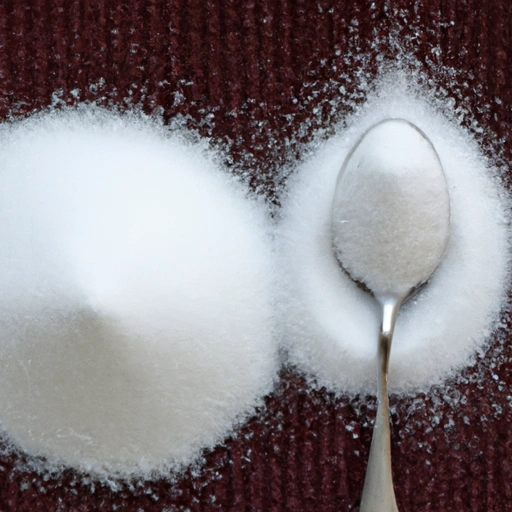Sugar Substitute
Description

Sugar substitutes are ingredients used to sweeten food and drinks without the high calorie count of regular sugar. They come in various forms, from natural sweeteners like stevia and honey to artificial sweeteners like aspartame and sucralose. Sugar substitutes can be found in a granulated form, liquids, or even syrups, making them versatile for different types of recipes. They are measured in grams and ounces, as well as teaspoons and tablespoons, to match the preference of both American and European cooks. When substituting for sugar, it's crucial to consider the sweetness intensity, as many sugar substitutes are sweeter than sugar itself, therefore requiring less quantity.
Common uses
Sugar substitutes are commonly used in beverages, baked goods, confectionery, and as table-top sweeteners. They are also found in many processed foods, including diet sodas, sugar-free gum, and low-calorie desserts.
Nutritional value
Calories
Most sugar substitutes have fewer calories per gram than sugar, with some having zero calories.
Protein
Sugar substitutes generally contain negligible amounts of protein.
Fat
These sweeteners are typically fat-free.
Carbohydrates
While some sugar substitutes have carbohydrates, they are often in smaller amounts than regular sugar and may have a minimal impact on blood sugar levels.
Vitamins
Artificial sweeteners usually do not contain vitamins.
Minerals
There are generally no minerals in artificial sweeteners, although some natural sugar substitutes may contain trace minerals.
Health benefits
For individuals looking to reduce calorie intake or manage blood sugar levels, sugar substitutes can be beneficial. They also do not contribute to tooth decay like sugar does.
Potential risks
Some artificial sweeteners may have potential health risks and could cause adverse effects in some individuals. It's important to use sugar substitutes in moderation and be aware of any personal sensitivities.
Common recipes
These include sugar-free baked goods, desserts, and confectionery, as well as savory dishes that require a hint of sweetness.
Cooking methods
While some sugar substitutes can withstand high temperatures, making them suitable for baking and cooking, others are best used in no-cook dishes or added after cooking.
Pairing with other ingredients
Sugar substitutes pair well with a variety of ingredients, but it's important to consider the sweetener's specific flavor profile when combining it with other components.
Summary
Sugar substitutes offer a versatile and often healthier alternative to regular sugar, suitable for a variety of dietary needs and cooking methods. Their usage spans a wide range of recipes and can be adapted to fit different measurement systems, catering to a global audience.